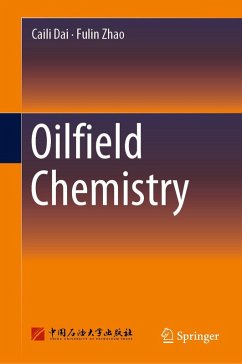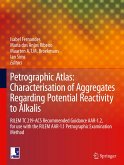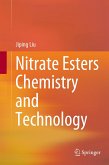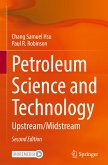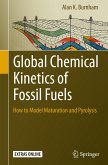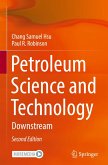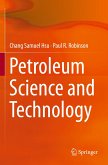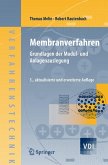- Gebundenes Buch
- Merkliste
- Auf die Merkliste
- Bewerten Bewerten
- Teilen
- Produkt teilen
- Produkterinnerung
- Produkterinnerung
This book provides comprehensive information on the youngest member of the petroleum sciences family: Oilfield Chemistry, proposes the chemical agents for addressing current problems, and explains the functions, mechanisms and synergistic effects of various chemical agents
Andere Kunden interessierten sich auch für
![Petrographic Atlas: Characterisation of Aggregates Regarding Potential Reactivity to Alkalis Petrographic Atlas: Characterisation of Aggregates Regarding Potential Reactivity to Alkalis]() Petrographic Atlas: Characterisation of Aggregates Regarding Potential Reactivity to Alkalis131,99 €
Petrographic Atlas: Characterisation of Aggregates Regarding Potential Reactivity to Alkalis131,99 €![Nitrate Esters Chemistry and Technology Nitrate Esters Chemistry and Technology]() Jiping LiuNitrate Esters Chemistry and Technology117,99 €
Jiping LiuNitrate Esters Chemistry and Technology117,99 €![Petroleum Science and Technology Petroleum Science and Technology]() Chang Samuel HsuPetroleum Science and Technology118,99 €
Chang Samuel HsuPetroleum Science and Technology118,99 €![Global Chemical Kinetics of Fossil Fuels Global Chemical Kinetics of Fossil Fuels]() Alan K. BurnhamGlobal Chemical Kinetics of Fossil Fuels67,99 €
Alan K. BurnhamGlobal Chemical Kinetics of Fossil Fuels67,99 €![Petroleum Science and Technology Petroleum Science and Technology]() Chang Samuel HsuPetroleum Science and Technology87,99 €
Chang Samuel HsuPetroleum Science and Technology87,99 €![Petroleum Science and Technology Petroleum Science and Technology]() Chang Samuel HsuPetroleum Science and Technology66,99 €
Chang Samuel HsuPetroleum Science and Technology66,99 €![Membranverfahren Membranverfahren]() Robert RautenbachMembranverfahren169,99 €
Robert RautenbachMembranverfahren169,99 €-
-
-
This book provides comprehensive information on the youngest member of the petroleum sciences family: Oilfield Chemistry, proposes the chemical agents for addressing current problems, and explains the functions, mechanisms and synergistic effects of various chemical agents
Produktdetails
- Produktdetails
- Verlag: China University of Petroleum Press / National Publication Foundation / Springer / Springer Nature S
- Artikelnr. des Verlages: 978-981-13-2949-4
- 1st edition 2018
- Seitenzahl: 416
- Erscheinungstermin: 29. Januar 2019
- Englisch
- Abmessung: 241mm x 160mm x 28mm
- Gewicht: 770g
- ISBN-13: 9789811329494
- ISBN-10: 9811329494
- Artikelnr.: 53882176
- Herstellerkennzeichnung Die Herstellerinformationen sind derzeit nicht verfügbar.
- Verlag: China University of Petroleum Press / National Publication Foundation / Springer / Springer Nature S
- Artikelnr. des Verlages: 978-981-13-2949-4
- 1st edition 2018
- Seitenzahl: 416
- Erscheinungstermin: 29. Januar 2019
- Englisch
- Abmessung: 241mm x 160mm x 28mm
- Gewicht: 770g
- ISBN-13: 9789811329494
- ISBN-10: 9811329494
- Artikelnr.: 53882176
- Herstellerkennzeichnung Die Herstellerinformationen sind derzeit nicht verfügbar.
Dai Caili completed her doctorate in 2006 and has been a professor at China University of Petroleum (East China) since 2008. She has pursued extensive research on enhanced oil recovery and oilfield chemistry, and is a distinguished scholar in China in the field of petroleum engineering. She is a recipient of the National Outstanding Youth Science Fund and has been selected as a "Yangtze River Scholar Distinguished Professor." She has won second prize in the National Scientific and Technological Progress Award, and many provincial and ministerial Scientific and Technological Awards. Dr. Dai has published more than 200 papers and two books, and has applied for more than 30 patents. She is a Fellow of the Chinese Petroleum Society and a member of the Society of Petroleum Engineers. Zhao Fulin was born in August 1933. His career spans more than fifty years of teaching and research work on oil production chemistry. He has published more than 200 papers and holds seven national patents. He is the founder and pioneer of the discipline "Oilfield Chemistry," which uses chemical principles and methods to explain and solve problems encountered in the oilfield, in China. He has published five textbooks, two of which - Oil production Chemistry and Oilfield Chemistry - were honored with the National Excellent Teaching Materials Award.
Part 1 Drilling Chemistry Chapter 1 Clay Minerals.- Chapter 2 Drilling Fluid Chemistry.- Chapter 3 Cement Slurry Chemistry Part 2 Oil Production Chemistry Chapter 4 Chemical Flooding and Miscible Flooding.- Chapter 5 Profile Control and Water Shutoff.- Chapter 6 Viscosity Reduction of Heavy Oil.- Chapter 7 Acids and Additives used in Acidizing.- Chapter 8 Fracturing Fluids and Fracturing Fluid Additives.- Chapter 9 Sand Control in oil and water wells.- Chapter 10 Wax Control and Removal in Oil Well Part 3 Gathering and Transportation Chemistry Chapter 11 Corrosion and Anti-Corrosion of Buried Pipeline.- Chapter 12 Demulsification of the Emulsified Crude Oil and Defoaming of the Foaming Crude Oil.- Chapter 13 Pour Point Depression Transportation and Drag-Reduction Transportation of Crude Oil.- Chapter 14 Natural Gas Treatment.- Chapter 15 Oilfield Wastewater Treatment.
Part 1 Drilling Chemistry Chapter 1 Clay Minerals.- Chapter 2 Drilling Fluid Chemistry.- Chapter 3 Cement Slurry Chemistry Part 2 Oil Production Chemistry Chapter 4 Chemical Flooding and Miscible Flooding.- Chapter 5 Profile Control and Water Shutoff.- Chapter 6 Viscosity Reduction of Heavy Oil.- Chapter 7 Acids and Additives used in Acidizing.- Chapter 8 Fracturing Fluids and Fracturing Fluid Additives.- Chapter 9 Sand Control in oil and water wells.- Chapter 10 Wax Control and Removal in Oil Well Part 3 Gathering and Transportation Chemistry Chapter 11 Corrosion and Anti-Corrosion of Buried Pipeline.- Chapter 12 Demulsification of the Emulsified Crude Oil and Defoaming of the Foaming Crude Oil.- Chapter 13 Pour Point Depression Transportation and Drag-Reduction Transportation of Crude Oil.- Chapter 14 Natural Gas Treatment.- Chapter 15 Oilfield Wastewater Treatment.

